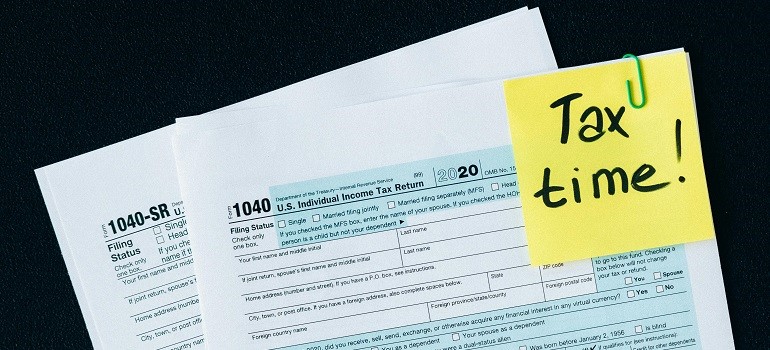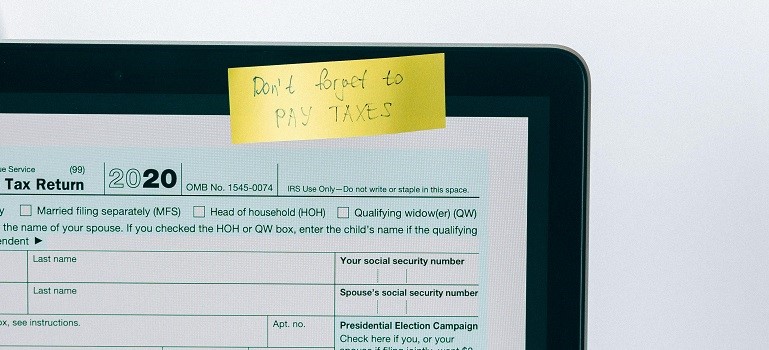If you’re planning to move to the Bay Area, one thing you’ll notice right away is how quickly costs add up. Between home prices, insurance, and taxes, even small differences matter. That’s especially true in the East Bay where property tax rates vary more than most people realize. Whether you’re relocating from out of state or just moving across the bridge, knowing which cities keep rates on the lower side can make a real difference to your budget. Learn how property taxes work in California and explore the best choices of the East Bay cities with the lowest property taxes in 2025. And if you’re preparing to relocate, teaming up with affordable movers in Bay Area can help you manage expenses while keeping your move efficient.
How California property taxes really work
California’s property tax rules might sound confusing at first, but they’re actually pretty simple once you break them down. Every homeowner in the state pays a base tax rate of 1% of the home’s assessed value — that’s the value the county uses to calculate your taxes, not necessarily the same as your home’s market price. Cities and counties can add small extra amounts for things like schools, road repairs, or community projects. These small add-ons make the total rate in most East Bay cities land somewhere between 1.1% and 1.4%.

When you buy a home, the assessed value resets to the price you paid for it. After that, the county can only increase that value by up to 2% each year, thanks to a state law called Proposition 13. This rule protects homeowners from sudden tax jumps if property values in the area rise quickly. If you sell your home or make major improvements — like adding a new floor or a swimming pool — the county will reassess your property at its new value. Because many people moving to the region face many challenges of moving to East Bay, understanding how property taxes work before you relocate can make planning far easier.
Fremont: Affordable compared to its Silicon Valley neighbors
Fremont is a sweet spot for anyone who wants Silicon Valley access without Silicon Valley taxes. It’s tucked into southern Alameda County, right between I-880 and the Dumbarton Bridge, with BART service to San Francisco and San Jose. The city’s median effective property tax rate is about 1.25%. With a median home value of roughly $680,000, most homeowners pay around $8,500 each year. Some neighborhoods, such as Mission San Jose, even report slightly lower rates.
Before buying, you can check the exact percentage for any property using Alameda County’s tax-rate search. And if you’re planning your relocation, consider hiring experienced movers in Fremont CA who know the city well and can help coordinate your move smoothly.
San Ramon: High home values, steady rates
San Ramon sits in Contra Costa County, framed by rolling hills and business parks. It’s home to Bishop Ranch, strong schools, and many new developments. Median home prices hover near $900,000, while the average tax rate stays around 1.25%.

That translates to about $11,000–$12,000 per year for most homeowners. For a Bay Area suburb with that kind of demand, that’s a solid deal. Some newer subdivisions include Mello-Roos fees for community improvements, so it’s worth asking the seller before you sign. Relocating families can rely on local professionals like movers in San Ramon CA for a seamless transition. Pairing trusted movers with solid research on property taxes can make the relocation process much easier.
Alameda: Island living in one of the best East Bay cities with the lowest property taxes
Alameda feels different from anywhere else in the East Bay. It’s an island community connected to San Francisco by bridges and ferries, which means you can live in a quieter setting while still reaching the city quickly. Its total property tax rate sits around 1.16%.
With Alameda County’s median home price near $1 million, annual bills usually fall in the $11,000–$12,000 range. That’s moderate for such a desirable location. If you’re relocating here, Alameda CA movers can handle the logistics of moving across the bridge or via ferry access.
San Leandro: Easy commutes and clear rates
San Leandro sits just south of Oakland and north of Hayward, right along Interstate 880. The city offers quick access to downtown Oakland, San Francisco, and Silicon Valley. Two BART stations—San Leandro and Bay Fair—make commuting straightforward, while the Marina District adds scenic waterfront views. The average effective property tax rate sits around 1.22%, meaning a $1 million home costs about $12,200 in yearly taxes. Neighborhoods like Estudillo Estates, Broadmoor, and Washington Manor differ slightly in rates because of school and infrastructure bonds. Homes here average around $900,000, while condos tend to stay closer to $550,000, giving buyers flexibility across price points. When planning your move to San Leandro, focus on these practical details:
- Compare tax-rate areas in 94577 and 94578 before buying.
- Check bond measures linked to San Leandro Unified School District properties.
- Look for proximity to Bay Fair BART, which cuts commuting time to under 20 minutes.
- Consider resale potential near Marina Boulevard, where homes retain steady value.
- Review any special district fees that support park or flood-control projects.

Relocating to this part of the East Bay can be straightforward with local guidance. Partnering with movers in San Leandro CA makes settling easier, especially if you’re coordinating from outside Alameda County. Experienced movers can handle timing around BART schedules and advise on parking limits near older streets. With a balance of accessibility, manageable tax rates, and neighborhood variety, San Leandro continues to draw new residents who value both location and cost control.
Pleasanton: Tri-Valley comfort and stable taxes
Pleasanton sits at the crossroads of I-580 and I-680, surrounded by parks, vineyards, and shopping centers. It’s part of the Tri-Valley area, known for its family-friendly neighborhoods and high-performing schools. The effective property tax rate averages around 1.17%. With many homes topping $1 million, yearly bills typically land between $11,500 and $12,000. That’s still below what you’d expect in many Silicon Valley suburbs.
Many new residents rely on local moving companies in Bay Area to handle their household move while they manage closing paperwork and school registration. Pleasanton’s strong community feel and consistent property tax rate make it one of the most attractive East Bay options for long-term homeowners.
Livermore: More space, lower rate
Livermore sits at the far edge of Alameda County, surrounded by vineyards, hills, and open valleys. It’s the kind of place where you can stretch out a little while still staying connected to the wider Bay Area. The city has a charming downtown, plenty of new housing, and quick access to Interstate 580. Many people choose Livermore for its balance—more space, slower pace, and noticeably lighter property tax burden. The average effective rate here is about 1.13%, which means a $1 million home usually costs around $11,300 in annual taxes. That’s several hundred dollars less each year than nearby Pleasanton or Dublin. Home prices vary widely: newer subdivisions like South Livermore reach above $1.1 million, while older neighborhoods closer to downtown average closer to $850,000. Things worth checking before buying in Livermore:
- Compare rates between South Livermore, Springtown, and Junction Avenue areas.
- Ask about Mello-Roos fees in new developments west of Vasco Road.
- Confirm school district assessments with the Livermore Valley Joint Unified system.
- Look into commute times—ACE Train rides to San Jose take about 90 minutes.
- Review community services funded by local bonds, such as road and park upgrades.

Relocating here feels easier when you have local help. Working with movers in East Bay ensures your move fits around Livermore’s suburban layout and busy corridors like First Street and Vasco Road. Many companies also offer short-term storage for those arriving ahead of closing dates. With its open space, strong housing market, and low property tax rate, Livermore gives new homeowners a practical way to enjoy East Bay living without stretching their budget.
Danville: One of the more upscale East Bay cities with the lowest property taxes
Danville sits between San Ramon and Alamo, framed by rolling hills and Mount Diablo’s scenic backdrop. It’s often ranked among the safest cities in California and has a distinct small-town charm that feels rare in the Bay Area. The town’s tree-lined downtown is filled with cafés, boutiques, and weekend farmers markets, giving it a relaxed but polished feel. Despite its upscale reputation, property taxes remain relatively low compared to other high-end suburbs. The effective rate usually ranges between 1.1% and 1.2%, which means a $1 million home costs about $11,000 to $12,000 per year in property taxes. Larger estates in areas like Diablo Country Club and Blackhawk reach higher values but stay within similar rate brackets, keeping the tax burden manageable. What makes Danville appealing to relocating homeowners:
- Highly rated schools within the San Ramon Valley Unified School District.
- Downtown favorites like Bridges Restaurant & Bar and the Danville Farmers Market.
- Easy freeway access via I-680, connecting to Walnut Creek and Dublin in under 25 minutes.
- Distinct neighborhoods, from Greenbrook family homes to luxury estates in Blackhawk.
- Frequent community events like Hot Summer Nights Car Shows and Art on the Green.
Those moving from other Bay Area cities often choose Danville for its quieter lifestyle and strong sense of community.
Pleasant Hill: Central location, fair rates
Pleasant Hill often flies under the radar, but it’s a practical choice for commuters. Located between Walnut Creek and Concord along I-680, it offers quick access to both urban and suburban conveniences.
Property taxes here usually range from 1.18% to 1.22%. On a $900,000 home, that’s around $10,800 per year. Slightly lower home prices mean more manageable overall costs. Many homeowners also explore nearby storage units in Bay Area when downsizing or storing seasonal furniture before settling in.

Walnut Creek: Downtown energy with moderate taxes
Walnut Creek sits in the heart of Contra Costa County, about 25 miles east of San Francisco. It combines an active downtown with easy access to the outdoors—Mount Diablo State Park is less than ten minutes away. The city has two BART stations, which make commuting to Oakland or San Francisco convenient, and a strong mix of shopping, dining, and entertainment options around Broadway Plaza. Property taxes here stay moderate despite rising home values. The effective rate usually falls between 1.19% and 1.25%, and with most homes priced over $1 million, yearly taxes average around $12,000. Homes near Walnut Heights, Rudgear Estates, and Saranap tend to hold higher assessed values, while condos downtown can cost less but carry their own association fees. Key factors to review before buying in Walnut Creek:
- Compare property taxes between Rossmoor, Rudgear Estates, and Downtown Core.
- Ask about school district bonds tied to Walnut Creek School District properties.
- Check if condo buildings have additional maintenance assessments that affect total cost.
- Evaluate commute options—BART to downtown San Francisco takes about 35 minutes.
- Review planned city infrastructure projects that may adjust rates in future budgets.
Dublin: Growth, access, and transparency
Dublin, at the intersection of I-580 and I-680, has grown rapidly over the last decade. New housing developments and retail centers make it one of the most active parts of Alameda County. Property tax rates hover near 1.24%, which is typical for the area.
That means a $1 million home will generate about $12,400 in yearly taxes. Some newer communities include Mello-Roos assessments that fund parks and schools, so it’s important to review those details before buying. With new construction, modern amenities, and clear local tax data, Dublin is a top pick for many new homeowners.
Comparing Alameda and Contra Costa counties
Looking at the counties side by side provides perspective. Alameda County’s effective rates often run slightly higher—between 1.1% and 1.45%—while Contra Costa typically averages about 1.3%. The variation comes from local assessments and different home values.
If you’re shopping in both counties, check the county assessor’s parcel lookup tools. These sites list every bond and assessment that applies to a property. Knowing those details helps you see the true yearly cost instead of relying on estimates. It’s not just about percentages—what matters is the total dollar amount. Two homes with the same price can have very different tax bills depending on which side of the county line they sit on.
Planning your 2025 property tax budget
You narrowed your city list. Now build a clear tax plan. Keep it simple and practical. You will estimate the annual bill. Then you will map monthly cash flow. Finally, you will prepare for first-year surprises. Follow these steps and track every number. Use your lender’s escrow as a guide. But also keep your own worksheet. This approach avoids missed costs and it also keeps your move on budget. Ready to plan your 2025 property taxes? Start with these simple steps and update them after inspections:
- Find the assessed value. Use your expected purchase price for now.
- Estimate the effective rate. Use the city range you confirmed.
- Calculate the yearly bill. Multiply assessed value by the effective rate.
- Plan monthly escrow. Divide the yearly bill into twelve equal parts.
- Add a cushion. Set aside one extra month of taxes.
- File the homeowner’s exemption. Reduce the assessed value by $7,000.
- Check due dates. First bill posts in November; second posts in February.
- Note delinquent dates. December 10 and April 10 carry penalties.
- Plan for a supplemental bill. Expect one after closing in year one.
- Review bonds and fees. Include school, park, and special district charges.
- Ask about Mello-Roos. Newer tracts may include added annual costs.
- Model renovations. Add expected value bumps for big upgrades.
- Confirm with lender. Align escrow with your latest estimate.
- Recheck before closing. Compare the seller’s bill with county records.

Build a monthly cash plan once you're set on one of the East Bay cities with the lowest property taxes
Your goal is clarity, not perfection. Keep notes on every assumption. Update numbers after the appraisal, inspection, and final loan terms. Confirm the parcel’s full tax-rate area before you remove contingencies. Ask the title company to itemize all assessments. Then share your worksheet with your lender. Make sure to build a monthly cash plan to help you:
- Start with escrow. Use the twelve-month split as your base.
- Layer in buffers. Hold a two-month reserve for surprises.
- Schedule payments. Mark county due and delinquent dates now.
- Time your move. Avoid closing just before tax deadlines if possible.
- Track first-year extras. Set a separate fund for the supplemental bill.
- Review yearly. Update your plan after the county posts new rates.
Find your home in East Bay today!
Property taxes might not be the most exciting topic, but they matter—especially in high-value regions like the Bay Area. The good news is that the East Bay has several communities where rates remain competitive. Fremont, San Ramon, Alameda, and Livermore all offer a mix of convenience, livability, and fair taxation. Before buying, always confirm the exact rate for your address and check for any local assessments. Once you’ve done that, you’ll have a clear picture of what to expect each year. Understanding how these costs work helps you make smarter choices, set a realistic budget, and find a home that fits your financial goals. With the right preparation, choosing among the East Bay cities with the lowest property taxes becomes a straightforward part of your relocation plan.
Tags
Subscribe to Upline Moving's Blog









